Well, it’s been a while since I wrote last, for which my apologies — I’ve been a bit busy doing and therefore not writing quite as much as sometimes, and then I got sick and wasn’t either doing or writing much of anything. (It was just a bad cold, but I’m not a very good invalid, I’m afraid. I’m lucky my family puts up with me; fortunately I only get sick a few times a year, after flying and in the turning of the seasons usually, a combination of which was the cause here.)
I was also somewhat thrown off my stride by technology. I had been excited for about two months to get back to Canada and to a proper computer — which I turned on, and … which promptly died! So I have now bought and set up a new computer, and then uploaded all 3500 pictures from the current SD card (I still have another lot from the old one to go through), so I now have pictures to share and, of course, half of England to talk about. So here goes.
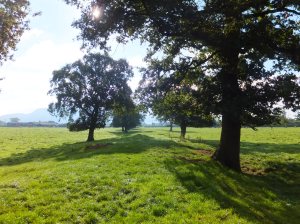 I had an invitation to visit some friends in Oxford, and looking at the map of the Offa’s Dyke path relative to that city of dreaming spires and bicycles, I realised that if I cut east from Clun I could pass avoid any more of the Black Hills of the Welsh Border, which though beautiful were rather punishing, go through the town of Ludlow — recommended by both my dad and my uncle as a pretty town I might enjoy seeing — pass through some utterly unknown-to-me-counties, and hit Stratford-on-Avon before following the Shakespeare Way to Oxford.
I had an invitation to visit some friends in Oxford, and looking at the map of the Offa’s Dyke path relative to that city of dreaming spires and bicycles, I realised that if I cut east from Clun I could pass avoid any more of the Black Hills of the Welsh Border, which though beautiful were rather punishing, go through the town of Ludlow — recommended by both my dad and my uncle as a pretty town I might enjoy seeing — pass through some utterly unknown-to-me-counties, and hit Stratford-on-Avon before following the Shakespeare Way to Oxford.
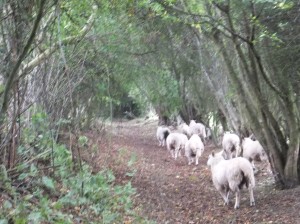 This meant that I missed the famous second-hand bookstores of Hay-on-Wye, as well as the further delights of the southern half of Offa’s Dyke. Like so many things about my walk, where I would hear of something wonderful just too far away to get to — Hexham abbey in Northumberland, which was six miles too far; all of Scotland north of the Lothians — it will have to wait for another trip. Besides, I couldn’t quite see how going to a town of used bookstores would end well. What on earth was I going to do with them? Obviously I would have to make a budget — and then what? Mail them home? How much would that cost? (You’ll see I had similar problems in Oxford. But I’m getting ahead of myself.)
This meant that I missed the famous second-hand bookstores of Hay-on-Wye, as well as the further delights of the southern half of Offa’s Dyke. Like so many things about my walk, where I would hear of something wonderful just too far away to get to — Hexham abbey in Northumberland, which was six miles too far; all of Scotland north of the Lothians — it will have to wait for another trip. Besides, I couldn’t quite see how going to a town of used bookstores would end well. What on earth was I going to do with them? Obviously I would have to make a budget — and then what? Mail them home? How much would that cost? (You’ll see I had similar problems in Oxford. But I’m getting ahead of myself.)
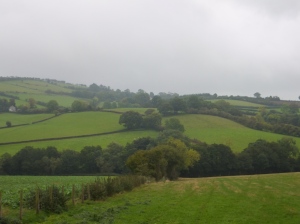 I left Clun and the Welsh borders therefore for Herefordshire. I thought I was going to be leaving Shropshire as well at this point for really the last time — it is a county with a wavery edge, not something one would really notice in a car but apparent afoot; between Powys and Shropshire the border is a stream, which the Offa’s Dyke trail crosses repeatedly — but it had one more turn, as I found after a severely confusing conversation in Ludlow. Someone asked me how the walking had been that day, and I discussed the wetness of Herefordshire underfoot, only to make the other person increasingly confused, until finally he said, “But you’re in Shropshire. When were you ever in Herefordshire?” Which made me go back to the map to make sure I hadn’t just made up ten miles of countryside.
I left Clun and the Welsh borders therefore for Herefordshire. I thought I was going to be leaving Shropshire as well at this point for really the last time — it is a county with a wavery edge, not something one would really notice in a car but apparent afoot; between Powys and Shropshire the border is a stream, which the Offa’s Dyke trail crosses repeatedly — but it had one more turn, as I found after a severely confusing conversation in Ludlow. Someone asked me how the walking had been that day, and I discussed the wetness of Herefordshire underfoot, only to make the other person increasingly confused, until finally he said, “But you’re in Shropshire. When were you ever in Herefordshire?” Which made me go back to the map to make sure I hadn’t just made up ten miles of countryside.
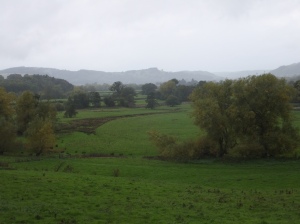 Herefordshire was wet underfoot. It was the middle of October and I was afraid my run of fine weather had finished and the rest of my travels would be unpleasantly wet and cold. Certainly it was rather wet for several days, and I was forced to stick mostly to lanes.
Herefordshire was wet underfoot. It was the middle of October and I was afraid my run of fine weather had finished and the rest of my travels would be unpleasantly wet and cold. Certainly it was rather wet for several days, and I was forced to stick mostly to lanes.
I passed from Clun to Leintwardine, with my day beginning and ending with rainbows, and then had a misty moisty sort of walk from Leintwardine to Ludlow. Part of this went through the Mortimer Forest, the sort of place people go for hikes on a Sunday afternoon — as it was when I got there.
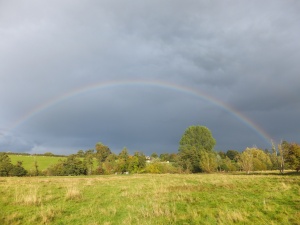 I went on a bit of a loop, getting a bit turned around on the woodland paths, but eventually found myself on the Mortimer Trail and managed to follow that in to Ludlow. It took me through a lovely beech woodland on a hillside, which only lacked open views of the coming town, but made up for it by spitting me out near a bridge over the river Severn where I could look up at the castle and the town and take the picture that was on all the postcards:
I went on a bit of a loop, getting a bit turned around on the woodland paths, but eventually found myself on the Mortimer Trail and managed to follow that in to Ludlow. It took me through a lovely beech woodland on a hillside, which only lacked open views of the coming town, but made up for it by spitting me out near a bridge over the river Severn where I could look up at the castle and the town and take the picture that was on all the postcards:
Ludlow itself was quite lovely, as promised. It had bunting and artwork and a small market going on in the market square, and a crafters’ fair going on in a building off the square. I spent a happy couple of hours poking around, finding a book of short stories by Dorothy L. Sayers which included a couple I hadn’t yet read. That was a great delight, as she is one of my favourite authors and though I know I’m missing some of her essays and plays, I thought I’d read all her fiction.
The crafters had all sorts of beautiful things for sale, which I could only admire, but I had some nice chats with the artisans — I had my backpack and walking stick with me, and was rather muddy from the Mortimer Forest, so it was pretty obvious I was doing long-distance walking!
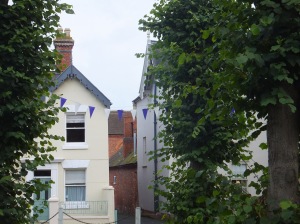 These were actually quite curious conversations, especially in comparison with ones I’d had along the Offa’s Dyke Trail. Since the Dyke is a National Trail, and a long-distance walking path of reasonable standing (it was created in the 1980s, I believe), no one found it odd that I should be walking down its length with a full backpack. The only strangeness I found there was that I was walking it in the off season, and so people wanted to know what my employment was that I could be doing such a walk in October. If I mentioned that I was walking all the way across England I got strange looks, too, of course, but nothing like being on random footpaths in Herefordshire (or Shropshire) or Worcestershire, as I found. There people found it very strange to see someone walking seriously — even if I still felt more or less as if I was sauntering along.
These were actually quite curious conversations, especially in comparison with ones I’d had along the Offa’s Dyke Trail. Since the Dyke is a National Trail, and a long-distance walking path of reasonable standing (it was created in the 1980s, I believe), no one found it odd that I should be walking down its length with a full backpack. The only strangeness I found there was that I was walking it in the off season, and so people wanted to know what my employment was that I could be doing such a walk in October. If I mentioned that I was walking all the way across England I got strange looks, too, of course, but nothing like being on random footpaths in Herefordshire (or Shropshire) or Worcestershire, as I found. There people found it very strange to see someone walking seriously — even if I still felt more or less as if I was sauntering along.
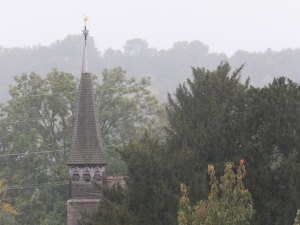 I only spent about a day in Herefordshire, and my feelings for it can be summed up as: pretty, but wet underfoot. When I left Ludlow the next day for Worcestershire and the Teme Valley, I had no expectations of anything besides rain. I packed the contents of my bag well with plastic bags and dry bags, covered it with the rain cover, put on my rain coat, got out my umbrella, and set off with the knowledge that it was going to rain all day, and that therefore I would have to stick to roads and back lanes than footpaths.
I only spent about a day in Herefordshire, and my feelings for it can be summed up as: pretty, but wet underfoot. When I left Ludlow the next day for Worcestershire and the Teme Valley, I had no expectations of anything besides rain. I packed the contents of my bag well with plastic bags and dry bags, covered it with the rain cover, put on my rain coat, got out my umbrella, and set off with the knowledge that it was going to rain all day, and that therefore I would have to stick to roads and back lanes than footpaths.
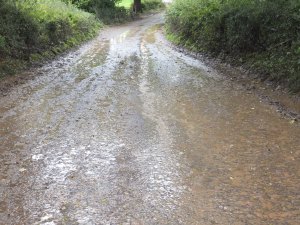 I also thought to myself of what I knew about Worcestershire, which was precisely nothing besides the fact that it presumably is where Worcestershire sauce comes from.
I also thought to myself of what I knew about Worcestershire, which was precisely nothing besides the fact that it presumably is where Worcestershire sauce comes from.
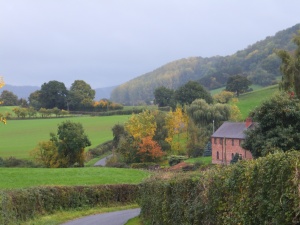 Well, I was floored by how beautiful it was. I’d never heard of the Teme Valley — I realised eventually that I had heard of the Malverns as being a place of natural beauty, and that they are in Worcestershire, but I only saw them in the distance. It wasn’t marked as an Area of Outstanding Natural Beauty, as such places often are in England; parts of it are a Site of Special Scientific Interest, because of the river’s ecological importance.
Well, I was floored by how beautiful it was. I’d never heard of the Teme Valley — I realised eventually that I had heard of the Malverns as being a place of natural beauty, and that they are in Worcestershire, but I only saw them in the distance. It wasn’t marked as an Area of Outstanding Natural Beauty, as such places often are in England; parts of it are a Site of Special Scientific Interest, because of the river’s ecological importance.
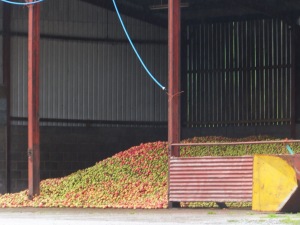 But generally, I wandered through cider apple orchards and mistletoe farms and hopyards,
But generally, I wandered through cider apple orchards and mistletoe farms and hopyards,
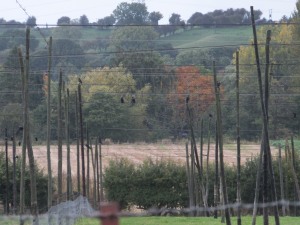 stately houses and substantial farms,
stately houses and substantial farms,
 along winding roads that seemed to have come straight out of Chesterton’s poem on the ‘winding English road’ (of which more later),
along winding roads that seemed to have come straight out of Chesterton’s poem on the ‘winding English road’ (of which more later),
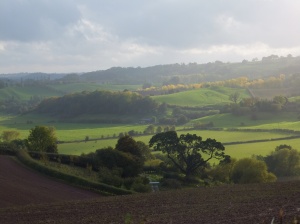 up and down short steep hills covered in beech and oak woods, with views of the gradually increasing river Teme, and bucolic river meadows of sheep and cattle,
up and down short steep hills covered in beech and oak woods, with views of the gradually increasing river Teme, and bucolic river meadows of sheep and cattle,
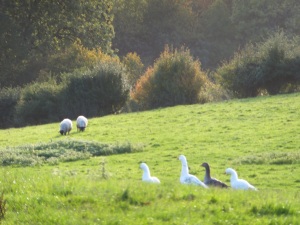 and eventually the skies cleared and I walked into the village of Martley under the kind of heavy gold light that you wish you could drink.
and eventually the skies cleared and I walked into the village of Martley under the kind of heavy gold light that you wish you could drink.

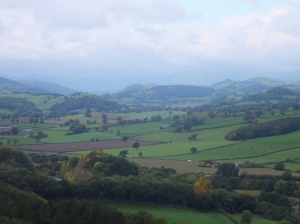
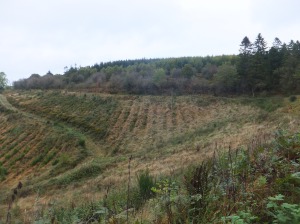
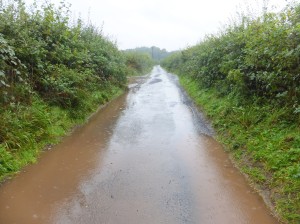
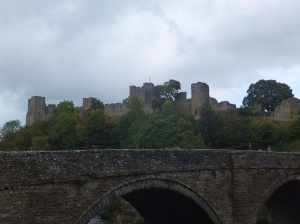
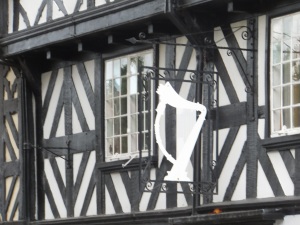
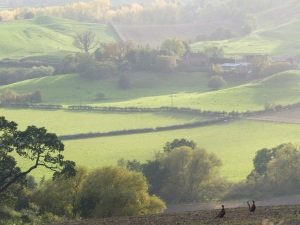
Hey, you’re in Canada now? Are you out East? Any plans to visit Toronto?
LikeLike
Yes, back in Charlottetown at the moment. I’m not sure when I’ll get to Ontario; though I hope to at some point after Christmas. I’ll let you know!
LikeLike
Hey, can you send me your parents number and address?
LikeLike